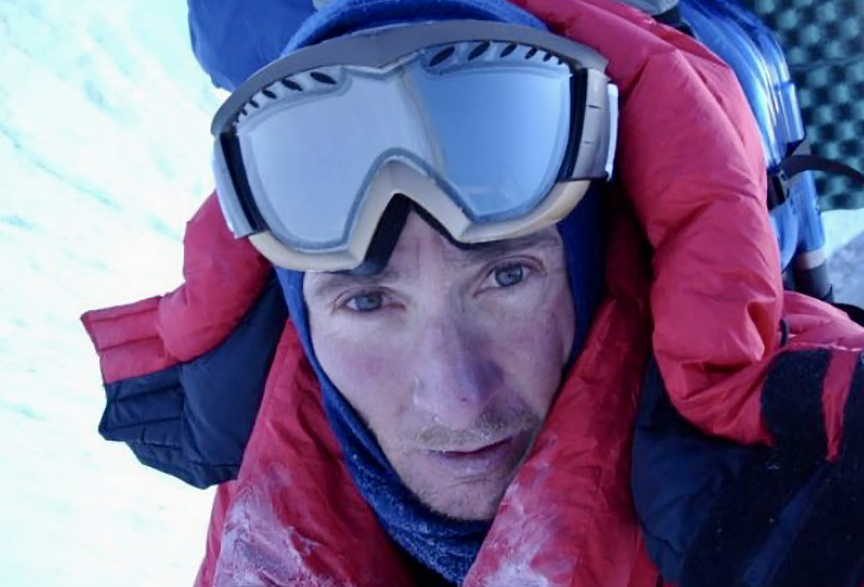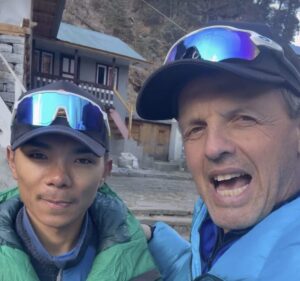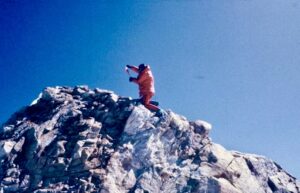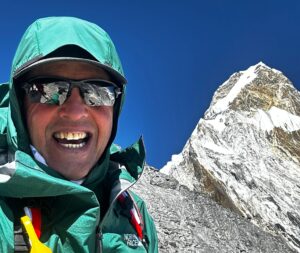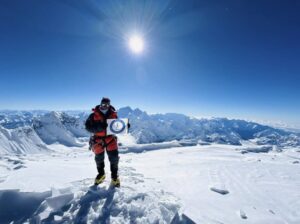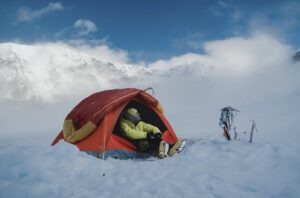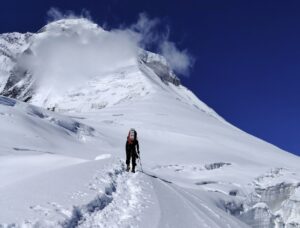Jean-Christophe Lafaille was well-known for his bold no-oxygen ascents of 8,000m peaks. He made several of these climbs solo or by new routes, without external support.
But Lafaille’s brilliant career ended on 8,485m Makalu in January 2006. During a solo winter attempt, he disappeared. Today, we look at Lafaille’s climbing career and that fatal expedition on the “Black Mountain,” the fifth-highest peak on Earth.
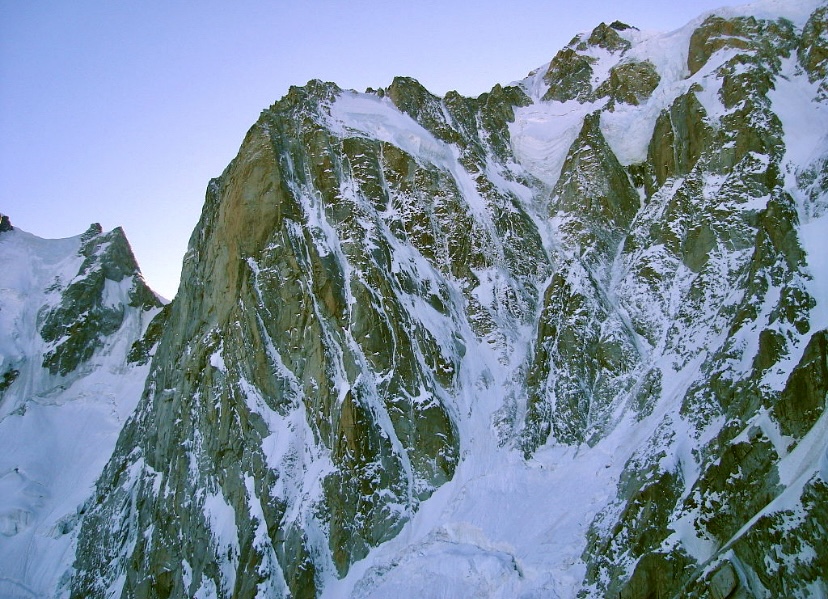
The north face of the Grand Pilier d’Angle. Photo: Manuamano
Bold climbs in the Alps
Lafaille started climbing close to his home in the southern French Alps. He soon became a strong sport climber, developing his skills on Ceuse in the Hautes-Alps. In 1989, at the age of 24, Lafaille became the first French climber to solo a 7c+ and one of the first to climb 8c graded routes.
After becoming a professional mountain guide in 1990, he targeted ever more difficult climbs in the Mont Blanc massif. That same year, he made the first solo ascent of the Divine Providence route (first climbed in 1984 by Francois Marsigny and Patrick Gabarrou) on 4,243m Grand Pilier d’Angle, a difficult buttress on Mont Blanc’s southern side.
“[It is] the most difficult and involving route in the whole of the Mont Blanc massif,” Lafaille later said of Divine Providence.
Lafaille completed other hard solo routes, such as on Chemin des Etoiles in the Grandes Jorasses massif.
A close call on Annapurna I
Lafaille’s first 8,000m attempt was on Annapurna I.
In the spring of 1992, Pierre Beghin invited Lafaille to take part in a French Annapurna expedition. They targeted the difficult South Face in alpine style by a new route. But at 7,400m, Beghin and Lafaille turned around in bad weather.
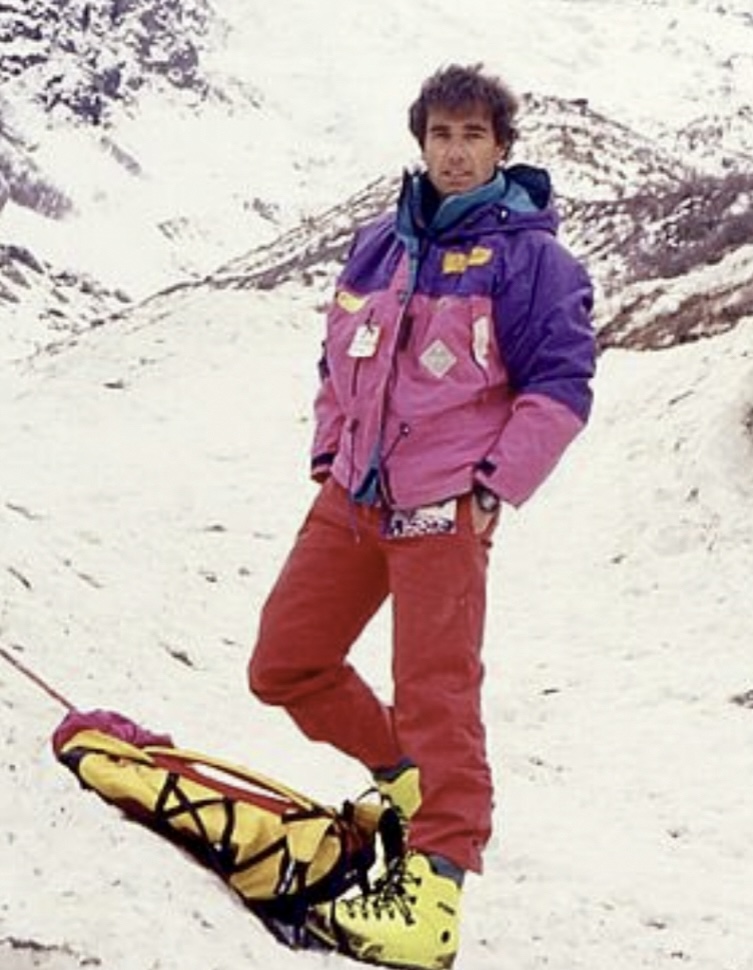
Pierre Beghin survived two avalanches on Makalu but died three years later on the South Face of Annapurna I when a rappel anchor came out. Photo: Wikipedia
During their descent, Beghin fell approximately 1,500m into the void when a rappel anchor failed. Lafaille had to continue the dangerous descent alone. Soon after, a falling rock broke his arm. Using his teeth and rappelling with one arm, he finally reached the Base Camp of a Slovenian party.
After this nightmare expedition, Lafaille considered quitting climbing. But the next year, he left France with a new plan.
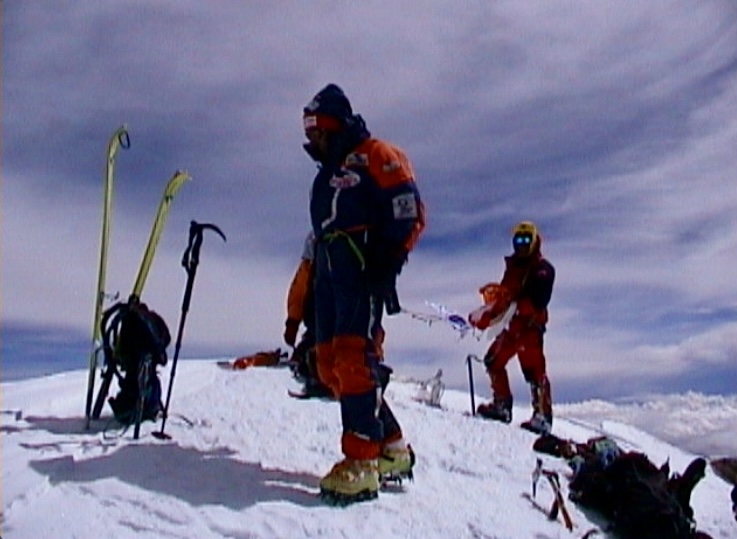
Hans Kammerlander and Lafaille on the summit of K2. Photo: Jean-Christophe Lafaille
More 8,000’ers
With incredible vigor, Lafaille started climbing the highest mountains of the Himalaya and the Karakoram. He ascended Cho Oyu in 1993 with bottled oxygen, followed by great no-O2 climbs on Shisha Pangma Central and West (in 1994 by a new route on the North Face, solo), Gasherbrum I and II (in 1996, finishing the two peaks within four days, solo), Lhotse (in 1997), Manaslu (in 2000, solo by the Northeast Face), K2 (2011 via the Cesen route), and Annapurna I (in 2002, the first ascent of the East Ridge, with Alberto Inurrategui).
He also tried Annapurna I again in the autumn of 1995 and spring of 1998, eventually succeeding in 2004.
In 2003, Lafaille summited Dhaulagiri I solo, Nanga Parbat via a new route with Simone Moro, and Broad Peak. He summited these three 8,000m peaks within two months.
On Broad Peak, he had a close call, surviving a fall into a crevasse and pulmonary edema. He was rescued by Ed Viesturs and Denis Urubko.
On December 11, 2004, Lafaille summited Shisha Pangma solo.
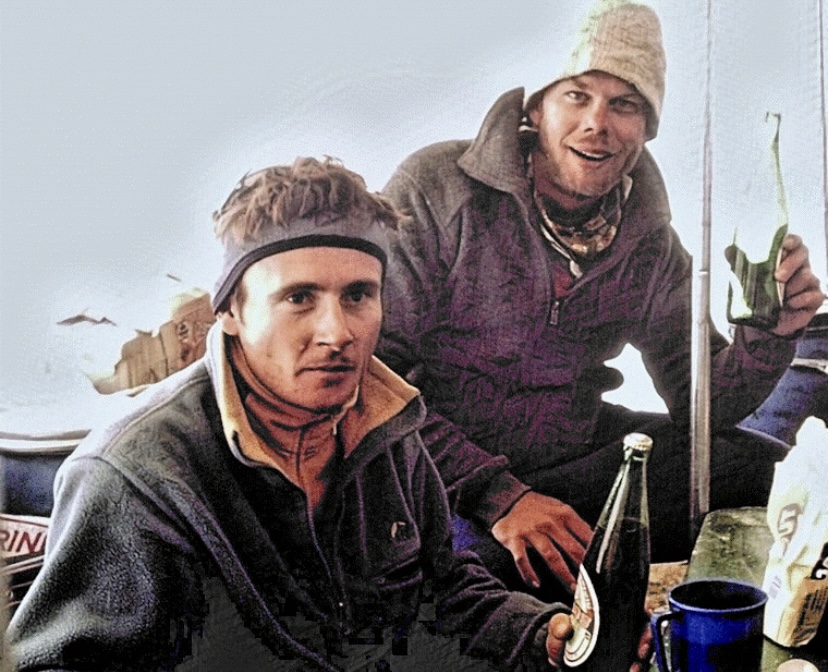
Lafaille (left) and David Callaway at Shisha Pangma Base Camp. Photo: Bernard Richard
Makalu
In the spring of 2004, Lafaille attempted Makalu solo and without bottled oxygen, approaching the peak from Tibet over Makalu II. His route was via the Northwest Ridge-North Face of Kangchungtse to Makalu La. On May 18, Lafaille turned around at 7,700m, exhausted and with cold toes and fingers. He summited Makalu II but not Makalu.
Makalu is a special mountain that has seen several lone wolf attempts. Among them was the first solo climber to make a winter attempt: Italian-French mountaineer Ivano Ghirardini.
In January 1982, Ghirardini ascended the difficult West Buttress. Despite an amazing effort, he didn’t make it because of the extreme cold and strong winds. Ghirardini climbed alpine style, without oxygen, with just 120m of rope and a 25kg backpack. He reached 7,000m despite hurricane-force winds and -50ºC temperatures.
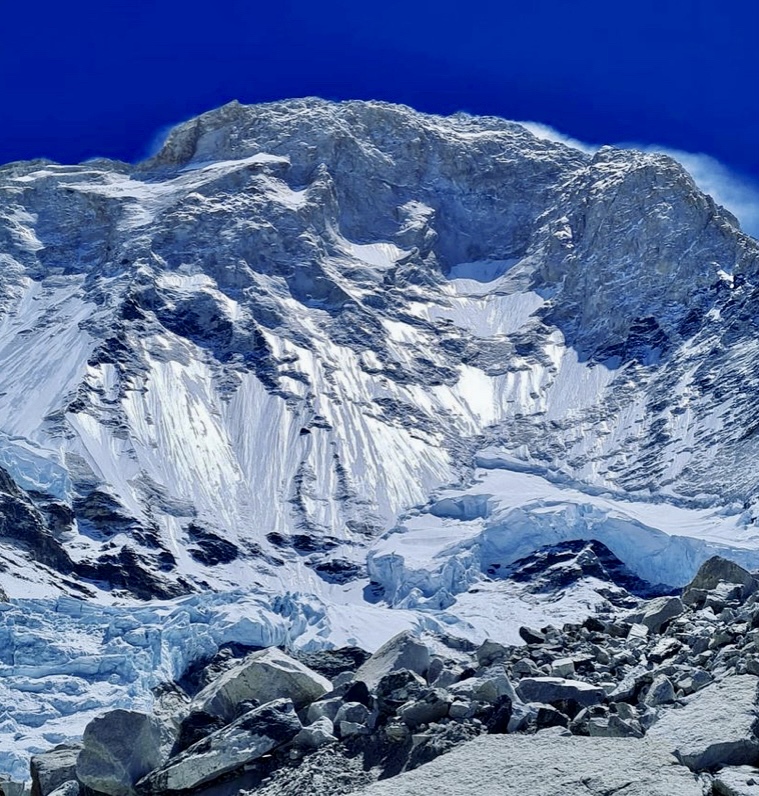
Makalu. Photo: Archil Badriashvili
In the winter of 2005-2006, Lafaille targeted Makalu solo no-O2 via the Makalu La-West Ridge route. During December and January, Lafaille ferried loads above his advanced base camp, but he had to retreat from Makalu La because strong winds destroyed his tent. He was almost swept away several times.
He stayed at base camp for two weeks, but as soon as the weather improved, he started climbing again on January 24, 2006.
The summit push
For his summit push, the forecast predicted changeable conditions, with summit winds possibly reaching 40-50kph, according to the American Alpine Journal.
Lafaille’s route was crevassed and dangerous. On January 26, Lafaille set up a small tent at his high camp. His last communication came on January 27 at 4:30 am. He said he was about to push for the summit from 7,600m and wanted to top out the same day. Lafaille remarked that he felt good despite a lack of sleep because of the altitude and cold (down to -30ºC).
No one heard from him again. He was 40 years old.
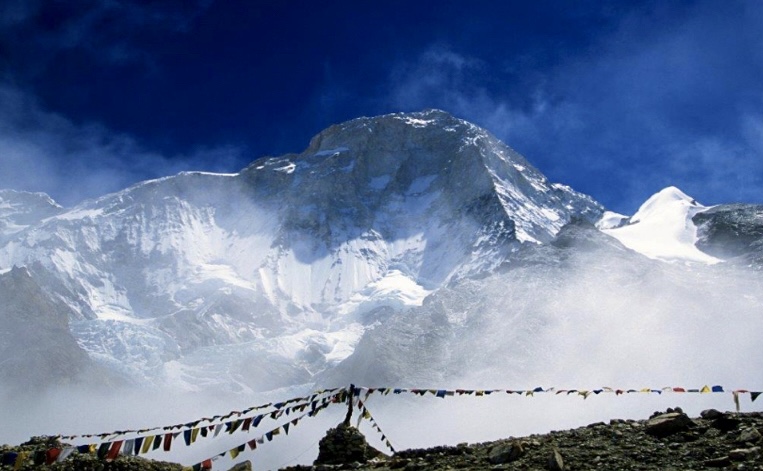
Makalu on a windy day. Photo: Sebastian Alvaro
There were a couple of helicopter searches. The last search came on February 4, when a helicopter flew to 7,000m, but the wind made it impossible to search any higher.
Those on board the helicopter (including Lafaille’s wife, brother, and the Finnish mountaineer Veikka Gustaffson) only saw a small red tent, but no other trace. The search team left a tent with a sleeping bag, stove, food, fuel, and a few other necessities at base camp in case he later returned alive.
Gustaffson’s take
Ten years earlier, Gustafsson, along with Ed Viesturs and Rob Hall, had climbed the same route on Makalu. Gustafsson found numerous treacherous crevasses and fell into three of them.
After Lafaille’s disappearance, Gustafsson was convinced that Lafaille had fallen into one of those crevasses.
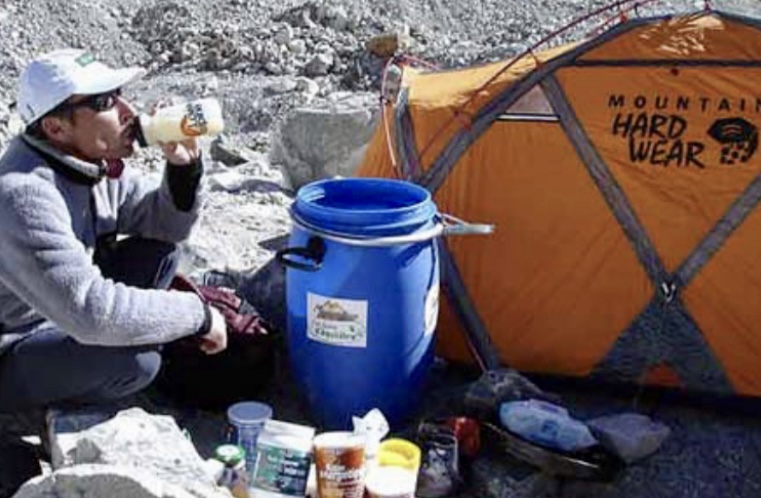
Lafaille in winter Makalu Base Camp. Photo: Jean-Christophe Lafaille
The tent mystery
According to The Himalayan Database, Mario Vielmo, leader of an Italian expedition to Makalu in the spring of 2006, found a small red tent at 7,600m on Makalu, but it wasn’t Lafaille’s tent.
Vielmo said that the tent was Polish-made and had Polish food inside. However, Vielmo also saw a small red tent at about 7,800m on the north side of Makalu, near the rocks of the icefall. This broken tent was near a big serac, so Vielmo stayed away from it and did not look inside.
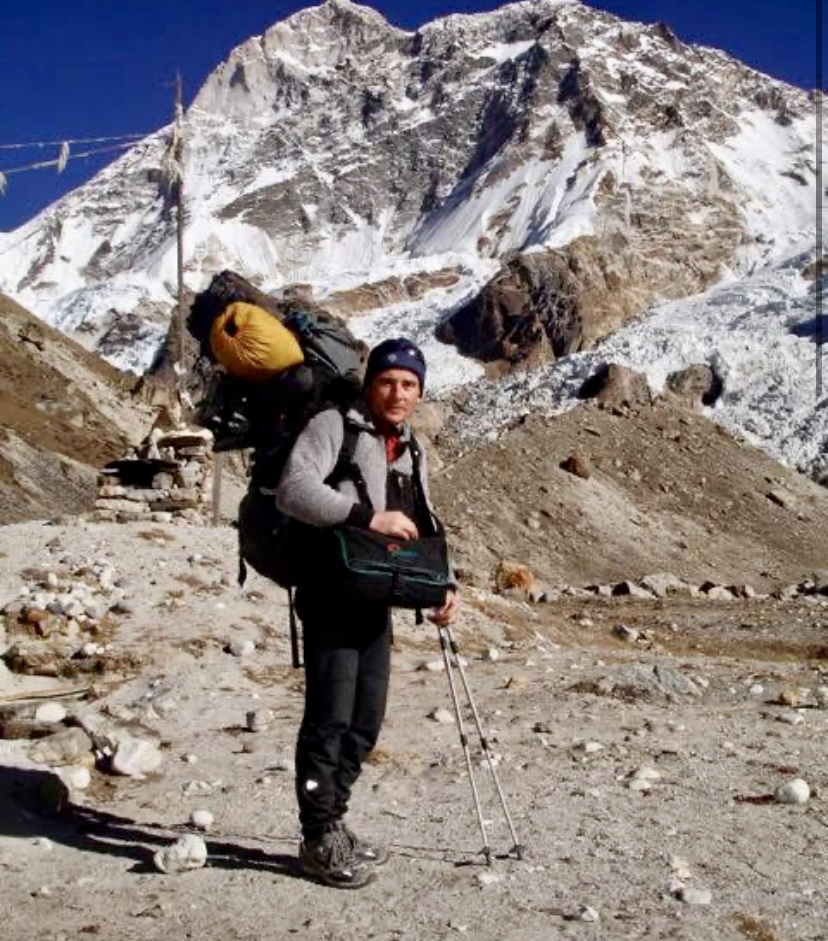
Lafaille at Makalu Base Camp. Photo: Katia Lafaille
What might have happened?
Lafaille’s body was not found, and it seems likely he fell into a crevasse. But exactly what happened, no one knows.
Strong winds have frustrated many winter attempts on Makalu, but in Lafaille’s case, it seems unlikely that the wind was a major factor. The forecast didn’t show hurricane winds for the summit push, and Lafaille made no mention of strong winds.
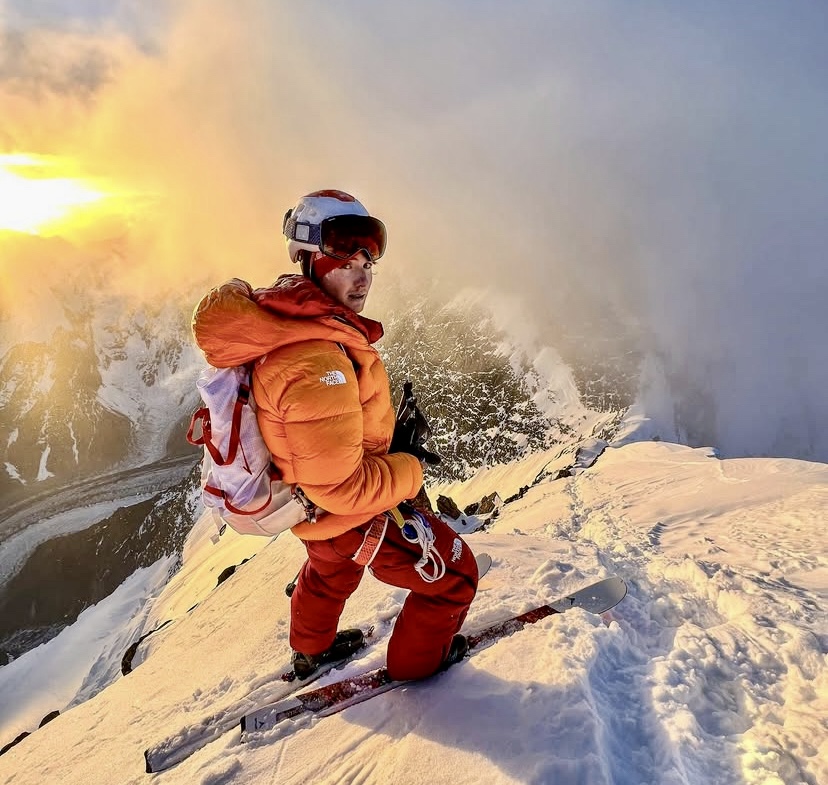
Tom Lafaille, the son of Jean-Christophe Lafaille, during a ski descent from Broad Peak. Photo: Tom Lafaille
